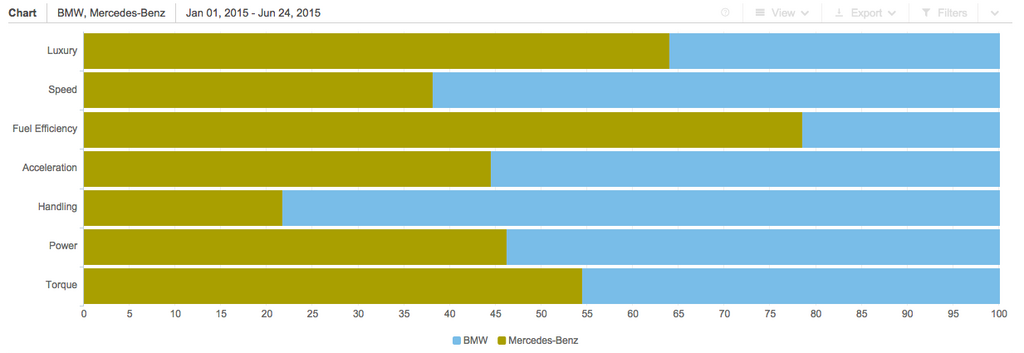20 Social Media Holidays to Celebrate This May
By Yasmin PierreApr 10
Unlock the secrets to staying ahead in the ever-evolving world of social media marketing.
Published April 19th 2016
It can sometimes feel that the biggest brands have done all the hard work early on and are still reaping the rewards years later. In fact it’s often the complete opposite, with established companies struggling to stay innovative and agile as they grow.
It takes a huge amount of work to stay at the top, with every upstart trying to usurp your brand. Continual monitoring of results and reporting against targets provides an ongoing health check.
Performing a brand audit allows you to take a step back and look at the overall picture, which can inform longer term strategy.
Whether benchmarking against competitors, considering a rebrand, or simply wanting a broader overview of performance and positioning, undertaking an audit can be a valuable exercise.
A brand audit is a detailed analysis that shows how your brand is currently performing compared to its stated goals, and then to look at the wider landscape to check how that performance positions you in the market.
The methodology will therefore differ depending on industries and individual companies. Regardless of the exact criteria you choose to measure, an audit should allow you to:
One option is to employ a branding agency to conduct a comprehensive audit. They may examine internal branding: your positioning, voice, brand values, culture, USP, and product.
External branding can also be considered; logo and other brand elements, website, advertising, SEO, social media, sponsorships, event displays, news and PR and content marketing.
They can also look at company infrastructure, such as customer service, HR policies, and sales processes.
However, you can chose to audit yourself using data that should be readily available. There are a wide range of metrics you can measure, but which ones are important will change on a case by case basis.
You should start by looking at your mission and strategic objectives to create a framework.
You want to consider who are your target customers, the marketing plan to reach them, and the layout of the business landscape you operate in.
Some companies will be able to refer to their go to market strategy. This consists of the overarching plan that includes target customers (geographically, job roles, sectors, buyer personas etc), product portfolio, distribution channels, partnerships, competitors, and pricing.
It can be easy to rely on web and social numbers alone, but this will not give a complete picture. You can conduct surveys by telephone, email, on your website or as part of the sales process. Services like SmartSurvey will let you create online questionnaires for free.
A mixture of quantitative and qualitative feedback will provide a more rounded view. Understanding the customer experience at each touchpoint will be an important part of your audit. As there is plenty of data available these anecdotal customer stories will help humanize the audit and provide an idea of how people perceive your brand.
They can also help to uncover answers to questions that cannot be easily told by data, such as rating the customer service experience or why someone ultimately chose your brand over the competition.
As 81% of consumers conduct online research before making a purchase (going up to 94% in B2B cases), the traffic to your website is an important, if obvious, place to start. Have a look at your web analytics program to discover how your website is performing.

Monitoring paid and organic channels is standard practice for working out if your SEO or display adverts are succeeding or need optimizing. You can also look deeper to see if traffic is coming from the markets you are targeting.
It’s also worth reviewing which channels drive traffic: you want there to be a mix of sources to mitigate against any sudden drops in one area. An over-reliance on organic search could be undone by one simple Google update.
Obviously, conversions and conversion rates should always be monitored. A deeper analysis as part of your brand audit will tell you if you are attracting the right kind of traffic, and which types of content are working best.
Social data can help further flesh out the overview of your brand, giving access to audience data that is unavailable through other channels.
The demographic information available through social media allows you to better understand your audience. You may want to reposition your messaging if your actual audience differs from your perceived audience.
Social intelligence tools like Brandwatch can be used to gain a deeper understanding of your customers, examining their interests outside your brand to inform marketing. Location-based social data can complement web location data.
You can find out who is linking to your website, just one way of uncovering influencers. Sentiment analysis allows you to gain an overview of the wider public opinion around your brand, or specific campaign or product.
A linguistic analysis using categorization of mentions can inform you of the associations with your brand. Combining this data with an audience analysis gives you opportunities to reposition or highlight strengths, and answering the needs of the market.

Of course sales data will be at the forefront of your ongoing monthly reporting, but examining it in conjunction with the rest of the audit data will help to identify problem areas.
The context provided by an analysis of the entire customer journey can bring out specific areas that are causing problems, or opportunities to further exploit.
No brand exists in isolation. The final part of conducting a brand audit involves looking at your competitors to understand your place in the market.
There is an entire landscape of competitor analysis tools that will do a lot of the work for you. SEO and rankings, backlinks, content, adverts, rankings, traffic, emails and price tracking can all be investigated.
Social data can provide the same data about your competitors as your own brand, as it is not gated in the same way a lot of other data is.
In addition to the methods listed above, calculating share of voice shows how much of the online conversation you are earning, and how that conversion differs in different markets.

A brand audit should highlight areas for action.
A detailed plan of findings should be followed by a series of actionable targets, with a timeline of expected results. After you have taken action on each area, monitor progress and results.
An ongoing process of measurement will inform if your targets are being reached, but you may wish to repeat the audit process after a reasonable amount of time.
However you chose to go forward, keep in mind that the landscape will continue to change and brands need to continually update and innovate to stay relevant and ahead of the competition.
Offering up analysis and data on everything from the events of the day to the latest consumer trends. Subscribe to keep your finger on the world’s pulse.
Consumer Research gives you access to deep consumer insights from 100 million online sources and over 1.4 trillion posts.
Existing customer?Log in to access your existing Falcon products and data via the login menu on the top right of the page.New customer?You'll find the former Falcon products under 'Social Media Management' if you go to 'Our Suite' in the navigation.
Brandwatch acquired Paladin in March 2022. It's now called Influence, which is part of Brandwatch's Social Media Management solution.Want to access your Paladin account?Use the login menu at the top right corner.



